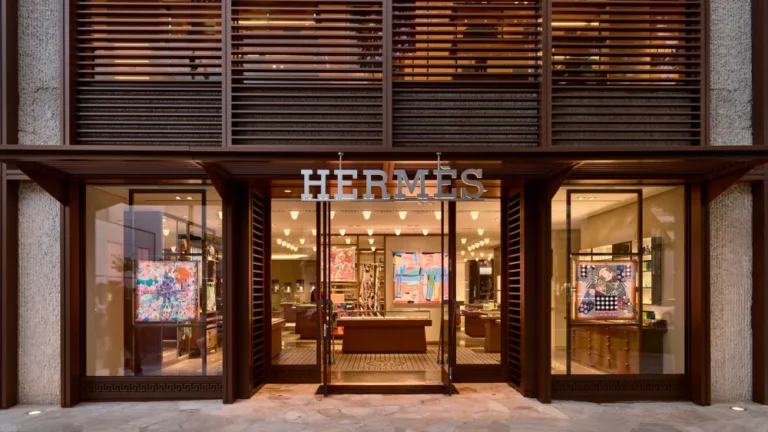In the fiercely competitive world of luxury fashion, where trends come and go with dizzying speed, Hermès stands as a beacon of timeless elegance and craftsmanship. For over a century, this iconic French maison has been synonymous with luxury, renowned for its impeccable craftsmanship, timeless designs, and unwavering commitment to quality. However, staying relevant in an ever-changing market requires more than just adhering to tradition; it demands innovation, adaptability, and a keen understanding of shifting consumer preferences. In this case study, we will explore how Hermès has successfully combined traditional craftsmanship with innovation to maintain its position as a leader in the modern luxury market. We will analyze the brand’s iconic products, such as the Birkin and Kelly bags, its approach to sustainability, and its expansion into new markets.
Heritage and Tradition:
Founded in 1837 by Thierry Hermès, Hermès began as a harness workshop in Paris, crafting high-quality saddles and equestrian accessories for the elite. Over the years, the brand expanded its offerings to include leather goods, ready-to-wear clothing, accessories, and perfumes, while remaining true to its heritage of craftsmanship and excellence. Today, Hermès is celebrated for its iconic designs, meticulous attention to detail, and unparalleled craftsmanship, making it one of the most coveted luxury brands in the world.
Iconic Products:
At the heart of Hermès’s success are its iconic products, which have become synonymous with luxury and exclusivity. Chief among these are the Birkin and Kelly bags, two of the most coveted and sought-after accessories in the world. The Birkin bag, named after actress and singer Jane Birkin, is characterized by its sleek silhouette, spacious interior, and distinctive lock-and-key closure. Similarly, the Kelly bag, named after actress Grace Kelly, features a structured shape, top handle, and signature turn-lock closure. Both bags are meticulously handcrafted by skilled artisans using the finest materials, with each piece taking hours, if not days, to complete. Beyond their timeless design and impeccable craftsmanship, the Birkin and Kelly bags have achieved cult status among fashion enthusiasts and collectors, symbolizing wealth, status, and sophistication.
Innovation in Craftsmanship:
While Hermès is renowned for its traditional craftsmanship, the brand has also embraced innovation to stay ahead of the curve. One example of this is the brand’s innovative use of materials, such as exotic skins, rare leathers, and sustainable alternatives. In recent years, Hermès has introduced new materials and techniques to its repertoire, including innovative treatments that enhance durability, longevity, and sustainability. For example, the brand has developed new ways to treat and dye leather, resulting in vibrant colors and unique textures that set its products apart from the competition. Additionally, Hermès has invested in research and development to explore sustainable alternatives to traditional materials, such as vegan leather and recycled fabrics, as part of its commitment to environmental stewardship.
Sustainability and Ethical Practices:
In an era of increasing environmental awareness and ethical scrutiny, Hermès has taken proactive steps to address sustainability and ethical practices within its supply chain. The brand has implemented strict standards and guidelines to ensure the ethical treatment of animals, the responsible sourcing of materials, and the reduction of waste and carbon emissions. For example, Hermès works closely with suppliers to ensure the traceability and transparency of its supply chain, from the sourcing of raw materials to the production of finished products. Additionally, the brand has implemented initiatives to reduce waste and promote recycling, such as its “petit h” program, which repurposes leftover materials and scraps into new and innovative products. By prioritizing sustainability and ethical practices, Hermès not only aligns with consumer values but also future-proofs its business for generations to come.
Expansion into New Markets:
Despite its storied history and heritage, Hermès has not rested on its laurels; instead, the brand has actively pursued expansion into new markets and demographics. This includes targeting younger consumers through digital marketing initiatives, collaborations with streetwear brands, and the launch of new product lines aimed at a more diverse and inclusive audience. For example, Hermès has embraced social media platforms such as Instagram and TikTok to engage with younger consumers and showcase its products in a modern and relevant context. Additionally, the brand has collaborated with popular streetwear brands and influencers to reach new audiences and tap into emerging trends. By adapting to changing consumer preferences and embracing new opportunities, Hermès has successfully expanded its reach and appeal to a broader audience while staying true to its heritage and values.
Conclusion:
In conclusion, Hermès’s success lies in its ability to innovate while staying true to its heritage and tradition. By combining traditional craftsmanship with innovation, the brand has maintained its position as a leader in the modern luxury market, continually evolving to meet the needs and expectations of today’s consumers. From its iconic products like the Birkin and Kelly bags to its commitment to sustainability and expansion into new markets, Hermès exemplifies the timeless allure of luxury and the enduring power of innovation. As the brand continues to evolve and adapt to an ever-changing landscape, one thing remains certain: Hermès will always be synonymous with excellence, elegance, and the pursuit of perfection.

